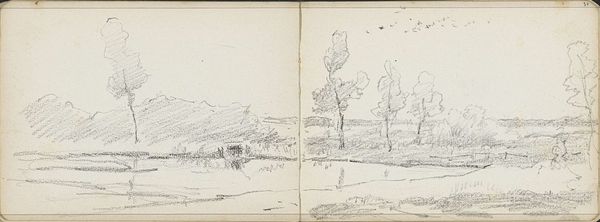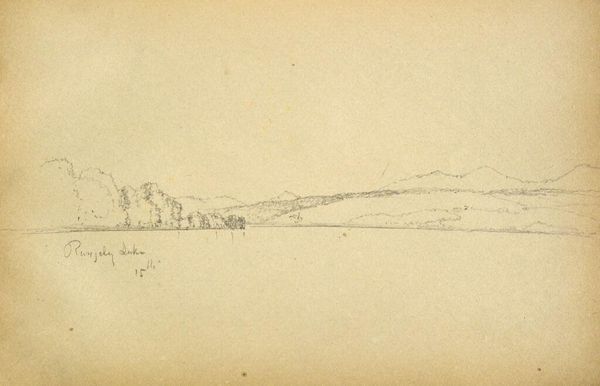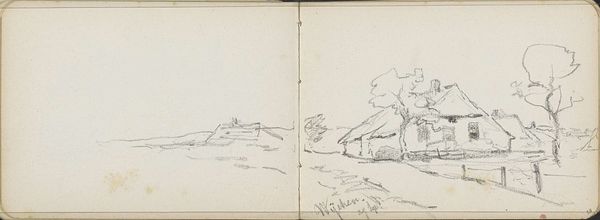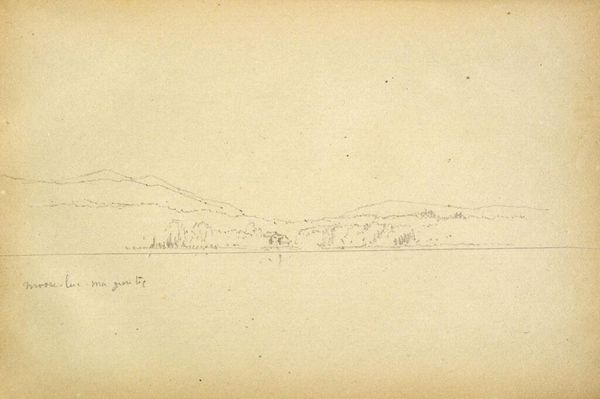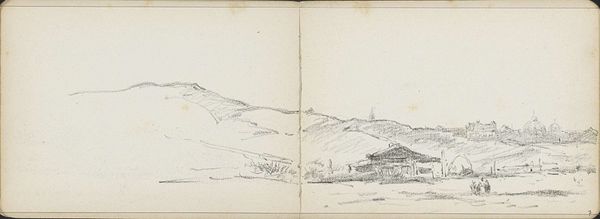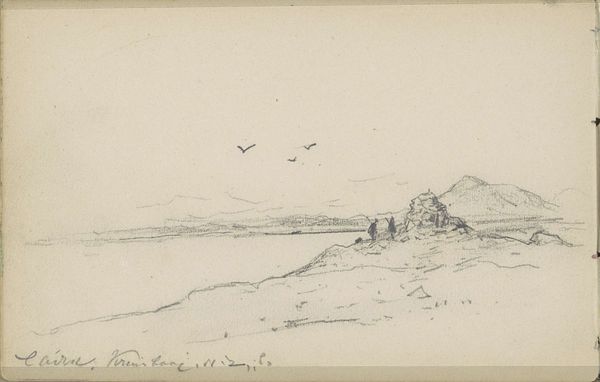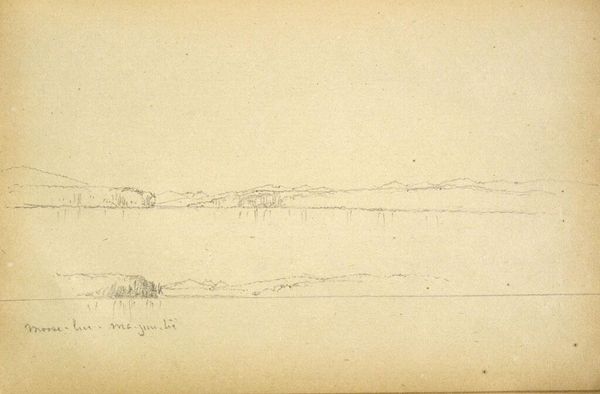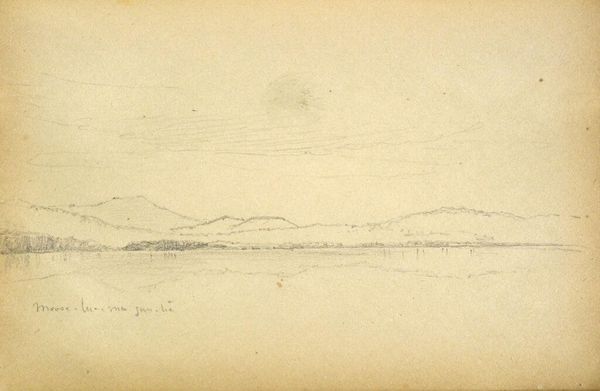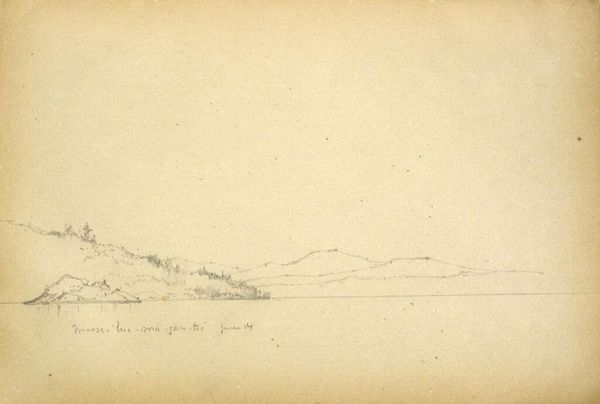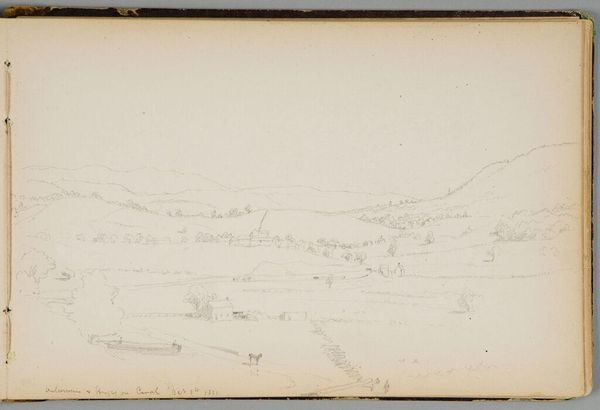
Copyright: Rijks Museum: Open Domain
Curator: This quick sketch, “Landschap met huizen aan het water,” translating to “Landscape with houses by the water,” is attributed to Willem Cornelis Rip and likely dates from the late 19th or early 20th century. Editor: It evokes a certain somberness, doesn’t it? A very sparse and faded quality to it, especially in the foreground, makes me feel a sort of desolate calmness. Curator: Precisely. I see in this impressionistic rendering an attempt to capture the rapidly changing rural landscape. These quick studies would have been particularly resonant during that era, reflecting concerns around industrialisation. This idea of memory and the image carries heavy weight when viewed with an anthropological eye. Editor: It looks like a landscape trying to cling to its form. The faint outlines, like half-remembered details, seem to struggle to emerge from the page. The thin, almost vibrating strokes seem to emphasize the precariousness of this lifestyle that's about to vanish due to forces greater than it can understand. Curator: The landscape genre itself became a locus of identity formation, especially as traditional communities felt pressure. Who does this land belong to, who controls it? It makes me consider land rights in this moment, thinking about indigeneity and cultural erasure. Editor: And in this specific work, there are very minimal signs of human life. Just a couple structures dwarfed by the natural world, perhaps alluding to humanity's fleeting presence within the landscape. Trees are often the strongest images that resonate, giving a sense of protection but still standing tall within this sketch. Curator: And Rip employs a seemingly hurried technique, doesn’t he? It reflects the pace of social upheaval and rural restructuring, capturing fleeting moments as history rapidly unfolds, using just pencil and paper. The emptiness is very important. Editor: This also enhances the immediacy. It becomes about recording an ephemeral moment, about loss and remembering that space from a time that's now inaccessible, and gone. Curator: Right. It allows us to reflect on themes of power, resilience, and our collective narratives around land and belonging. Editor: Indeed. These understated sketches contain a complexity and depth of thought far exceeding their immediate impression.
Comments
No comments
Be the first to comment and join the conversation on the ultimate creative platform.

